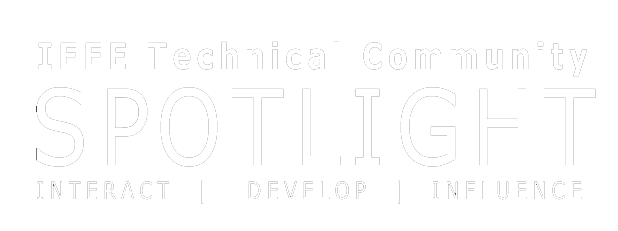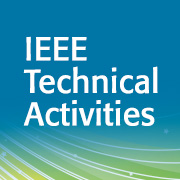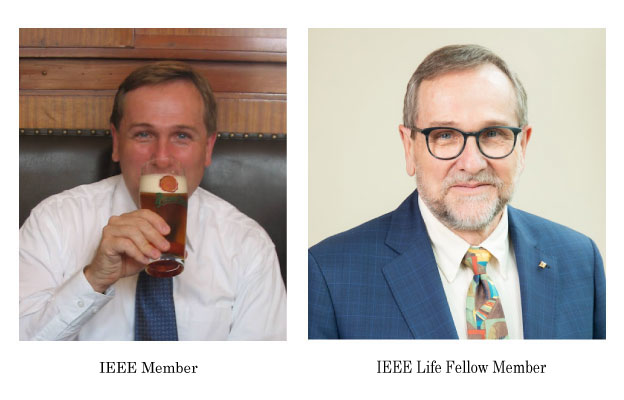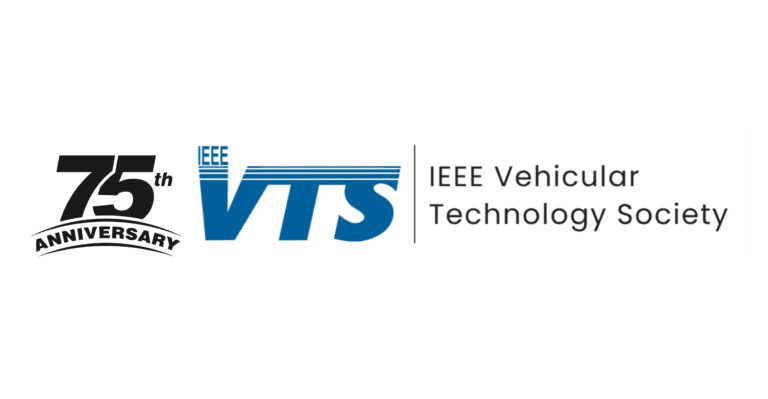 Entrepreneurship is in. While startup activity was in decline several years ago, according to the 2015 Kauffman Index, the downward trend reversed last year, as more entrepreneurs launched their own businesses in what is the largest year-over-year increase in the past 20 years. IEEE members are no exception to this trend. According to a recent survey, a large number of IEEE—USA members (1 in 5) work in or own companies with under 50 people – and over 90% of these companies are technology driven. It is widely believed that this trend will continue to increase, as more and more new college graduates are opting to start their own companies instead of joining one.
Entrepreneurship is in. While startup activity was in decline several years ago, according to the 2015 Kauffman Index, the downward trend reversed last year, as more entrepreneurs launched their own businesses in what is the largest year-over-year increase in the past 20 years. IEEE members are no exception to this trend. According to a recent survey, a large number of IEEE—USA members (1 in 5) work in or own companies with under 50 people – and over 90% of these companies are technology driven. It is widely believed that this trend will continue to increase, as more and more new college graduates are opting to start their own companies instead of joining one.
Since 2014, IEEE has exponentially amped up the services it provides to its members in respect to entrepreneurship and related hot topics. By launching a number of new initiatives designed to facilitate discussions regarding entrepreneurship, technology marketization, manufacturing, investment and beyond, IEEE has positioned itself as a valuable asset to those who seek to start their own companies, share their ideas, and invest capital in both. Ken Stauffer, Chair of the IEEE Entrepreneurship Steering Committee, discusses what led him to his career as an entrepreneurial engineer, and why it’s such a great time to be an entrepreneur.
Can you please describe your education and career thus far? Why did you pursue engineering?
Pursuing engineering was part of my journey of self-understanding. I was born and raised in Tanzania, East Africa. Our house was a mud brick house without electricity, and we cooked on a wood stove. I still remember going to the big city, Nairobi, and turning the light switch on and off in our hotel room, enthralled with the magic of electricity. Although I grew up speaking both Swahili and English, I went to an English speaking boarding school at the age of 5. I came to the US at the age 13, and my high school grades in math and science were pathetic, so in college I was a Philosophy major – because I really loved logic.
How can the IEEE continue to stay relevant to entrepreneurs, venture capitalists, and other technology creatives? Join the discussion on IEEE CollabratecTM.
IEEE Collabratec sign up is free using your IEEE Account.
After leaving college, I worked as a Stage Manager in the theatre, becoming a professional with Actors’ Equity, working in regional theatre, industrial shows, and touring shows throughout the US and Canada. Around that time, in the 1970s, two things happened. A lot of the theatrical sound and lighting was becoming computerized and I didn’t know anything about computers. I also came across a puzzle in a magazine which I completed, sent in and was subsequently asked to complete a battery of intelligence tests. The results showed that, contrary to my high school grades, I was quite bright; go figure!
So I decided that my earlier disasters in math and science must have been about a rough transition to the US, instead of aptitude. To test that theory, I decided to go back to college and major in a curriculum full of math and science that would also teach me about computers — that was Electrical Engineering.
I enrolled at Vaughn College in New York City where my AAS degree project was to interface a PT-6 turboprop jet engine with a PDP 11-03 computer to read and control the engine functions. It required building all the transducers, designing the circuitry, proto-boarding it, creating the printed circuit board, and coding all the software. It was exactly what I wanted and needed. I graduated with a 4.0 GPA, went on to get my BSEE and MSEE, and worked at Bell Labs for 16 years. Two years ago, I joined the Board of Trustees at Vaughn College to complete the circle.
How did you become involved with the IEEE, how and why did your involvement evolve, and in what capacity are you involved with the organization now?
Like most students in school, I worried about getting a job after graduation so I joined IEEE as a student, and put it on my resume to increase my employment odds. After graduation, I joined Bell Labs, and stayed active in IEEE as a judge at the Region 1 student paper contests, as an Industrial Rep to the International Student Affairs Committee, and with IEEE ComSoc. Due to all this activity I became an IEEE Senior Member.
I left AT&T Labs in 2000 to help found EPIK Communications in Orlando, Florida, eventually becoming the CTO. When it was sold, I founded Technology Assurance Labs in 2003, where I’m currently the CEO. As an entrepreneur, I was too busy starting a new company to be involved with IEEE. I was learning all the things one doesn’t learn in Engineering School – how to develop and package products, how to finance a company, marketing, sales, patenting, etc. Entrepreneurship is a 7 X 24 X 365 commitment!
In 2014, I was asked to join the IEEE Board Ad Hoc Committee on Entrepreneurship by the Chair and my friend, Tom Rowbotham. He got me reengaged with IEEE after a 15-year hiatus, this time as an entrepreneur. I’ve spent the last 3 years helping to develop the IEEE Entrepreneurship strategic vision and implement that initiative as the Chair of the Entrepreneurship Steering Committee.
How can the concepts learned throughout your education and career be applied to your participation in the IEEE?
Be bold, be honest, take risks, follow your heart, trust your instincts, work hard, and volunteer to give back.
Similarly, how did your background in theatre shape your current work? Can you draw any parallels?
Yes, indeed. Many people think that the theatre and engineering are polar opposites, but I disagree. Both require creativity, team collaboration, and accepting failure as an outcome. Creating an engineering start-up is a lot like creating a theatre production. It takes an initial idea, a core creative team, money, etc. and then it grows from there until opening night – hopefully both the start-up and the theatrical production have a long “run”.
What is the most interesting entrepreneurial project you’ve worked on? What did you learn from this, and how did you apply it?
It was actually my first intrapreneurial project at Bell Labs; those were the Model T days of data communications – 300 baud and X.25 packets. We started a Data Applications Lab to correlate how AT&T’s network performance impacted its customers’ data applications like BISYNC and SNA. I spent a lot of time flying around interviewing AT&T’s largest data customers like Bank of America, CNA Insurance, American Airlines, etc. It taught me to always listen to your customers, get their feedback, and most importantly to speak in their language. It served me well, when I became an entrepreneur.
Technology Assurance Labs currently has an IoT product called OWL© which we developed for the propane industry, and our customers keep showing us new ways to use it. It is quite exciting to see someone use the tool you invented in a new way that you never imagined! Entrepreneurs build tools or apps, but customers buy them and show us how to improve them — if you listen!
Why is it important for the IEEE to have a presence in the entrepreneurial space? Why is this important to Technical Activities in particular?
Entrepreneur.com just had an article on Sep 15th, 2016 about a Harvard Business School report titled “Entrepreneurship Is the Brightest Spot in a Crappy Economy.” It says that the U.S. is fertile ground for entrepreneurship, based upon 3 qualitative factors– availability of capital for high-quality ideas, ease of setting up new businesses, and lack of stigma for failure. Today’s creative “techie” climate reminds me a lot of the creative climate in the 60’s in terms of music, theatre, rock opera etc. It is a great time to be an entrepreneur in tech!
It is important to IEEE and Technical Activities because young professionals and entrepreneurs are our future IEEE leaders. Due to the proliferation of role models in the media, the proliferation of software, and more accessible capital like crowd funding, many millennials are opting to start their own companies instead of “getting a job.” IEEE needs to stay relevant with this crowd. The paradigm that worked during our generation was to get members involved at a young age, provide relevance to their careers, and they would stay involved in IEEE and become life members or leaders in the IEEE. We need to continue that paradigm with entrepreneurs. If we play our cards right in attracting millennials and entrepreneurs, IEEE will continue to grow and prosper.
What kind of “tools” do today’s entrepreneurs want/need, and how is the IEEE positioning itself to be of value to this segment?
Entrepreneurs like to network both in person and virtually. To that effect, we developed an IEEE Entrepreneurship web site, an Entrepreneurship Community on IEEE CollabratecTM which has over 8,000 members, provided a ton of entrepreneurial content on IEEE TV, created monthly virtual events, and yearly physical events such as IEEE N3XT in cities like Austin and Toronto. In 2016 we expanded the IEEE Entrepreneurship brand into Africa, Europe, and Asia. We are also exploring an IEEE Café idea for Young Professionals.
How can the IEEE work with other parts of the organization, and more traditional member segments and services, to make this happen? What kind of collaboration have you encountered thus far?
When we started IEEE Entrepreneurship, we purposely did not make it an Affinity Group, Society, or IEEE organizational unit because we knew entrepreneurs already existed in the Regions, Sections, Societies, Chapters, etc. Our goal is to provide a focus and identity for all the entrepreneurial activity happening in IEEE and attract other entrepreneurs to join IEEE.
We have been working with the IEEE Young Professionals, IEEE Women in Engineering, IEEE Power and Energy Society, and IEEE Signal Processing Society, to name a few. We would like to work with all parts of IEEE to make the IEEE Entrepreneurship Initiative as inclusive as possible. I attribute our successes to two very special people — Mary Ward-Callan and Randi Sumner. I can’t say enough wonderful things about them, their teams, and their attentiveness to the needs of young professionals and entrepreneurs!
In your opinion, what has been the most successful moment in IEEE Entrepreneurship thus far? What are some areas of improvement?
As an entrepreneur, I drifted away from IEEE for 15 years, even though I remained a Senior Member. I felt IEEE wasn’t relevant to me anymore. So, one of our goals was to make IEEE relevant to entrepreneurs. After our first big N3XT event in Toronto, Devon Ryan, an IEEE Young Professional who I had never met, wrote that “The experience at N3XT was one I will never forget! Overall it was very thought-provoking and insightful … it helped me understand on a deeper level – the importance of entrepreneurship within IEEE.” For 15 years, I had been struggling with the same relevance issue and at that moment I felt like we had started to remedy it.
There is a saying that “you eat an elephant one bite at a time”. We still have a lot of work to do to make IEEE Entrepreneurship more relevant and more successful. We need to increase collaboration within the IEEE Regions and Societies and we need to sharpen our focus on IEEE’s core competencies to differentiate ourselves from all the other entrepreneurial initiatives. IEEE is global and we believe it can differentiate itself with a focus on “hard tech” – “engineering-driven entrepreneurship that requires a technical breakthrough, in either hardware, software, or both”.
How can entrepreneurship help advance technology for the benefit of humanity?
There are many examples of products and companies that exemplify the best of entrepreneurship for the benefit of humanity. If you look around you can see all sorts of examples. SpaceX is attempting to colonize Mars and Uber is using self-driving cars in Pittsburgh.
Vestergaaurd calls its program “humanitarian entrepreneurship”; they created among many other products, Lifestraw, a cheap individual water straw which filters out nearly 100 percent of bacteria and nearly 99 percent of the viruses that pass through it. It can deliver up to 1,000 liters of clean water and has been used extensively in Africa, India, and in the aftermath of natural disasters in Haiti and Pakistan.
IEEE is also at the forefront. This summer, we delivered an IEEE Entrepreneurship Tutorial in Zambia at the IEEE Power and Energy Society PowerAfrica Conference. One of the start-up pitches was about using an IEEE Micro Grid to supply electricity on the Ugandan islands of Lake Victoria to provide refrigeration and ice to fishermen, so their catch would stay fresh longer and not spoil.
Is there anything else you’d like to add or emphasize?
My work on entrepreneurship for IEEE has given me the opportunity to think about the next generation and the resources we can provide to those who have the power to literally change our world. IEEE has the ability to help talented people start companies, create jobs, contribute to our quality of life, and become our future leaders!
In 2017, We’ll be transitioning the Chair of IEEE Entrepreneurship to Allan Tear who is uniquely suited for that role. He was on our Steering Committee this year, he is a co-founder of Betaspring (a New England based accelerator), he is an investor, and has hands-on experience with start-ups. I’m thrilled that he agreed to take on this role, and I look forward to helping him.






4 Responses
A real true to life story, well told, thank you. Acknowledging your business experience, what do you think of teaching a) Financial Evaluation and b) Product Life Cycle Management to engineers to prepare them for life?
I am so impressed with all the IEEE is doing to inspire and support entrepreneurship. I hope all your participating members will seek out their local incubators and accelerators to network, share and engage. And I hope the collegiate IEEE chaptera are well engaged. We are proud that you are part of our UCF Incubator family Ken!! Well done.
Great Article. Ken Stauffer exemplifies the best of our American entrepreneurial spirit. Great job to Ken and IEEE
I am interested in to become an entrepreneur